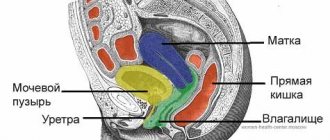The outer ear is formed by the pinna and the external auditory canal.
Author:
- Oganesyan Tigran Sergeevich
ENT pathology expert
5.00 (Votes: 1)
- Outer ear
- Middle ear
- Inner ear
The outer ear is the visible part of the hearing system, formed by the auricle and the external auditory canal. The basis of the auricle is elastic cartilage, covered with skin on both sides.
The lobe is a concentration of fatty tissue. The external auditory canal has several parts - the tragus, the deep notch and the antihelix. Its length usually does not exceed 2.5 cm, two-thirds of which is occupied by the membranous-cartilaginous section. The remaining part is the bony section that serves as the boundary between the outer and middle ear.
The main function of the auditory analyzer is sound transmission and sound perception. In this regard, the auricle directs sound vibrations to the external auditory canal, which acts as a conductor of sound waves to the eardrum. Moreover, it is in this part that selective amplification of sound occurs. Any reduction in the lumen leads to hearing loss.
Structure of the hearing organ
Sounds surround a person from birth. There are 3 sections of the hearing organ:
- outer ear;
- middle ear;
- inner ear.
The outer ear is the visible part of the organ. It is represented by the auricle and the external auditory canal. The concha is a funnel-shaped cartilage covered with skin. On its surface there are various formations: pits, curls, hills. They help improve sound quality, make it louder and direct it into the ear canal.
The fibers of the ear muscles are attached to the concha. In the process of evolution, man has lost the ability to “move his ears” in order to more accurately localize sounds; these muscles work in rare “lucky” people. The skin of the shell has sebaceous and sweat glands.
The external auditory canal is a winding canal, the length of which is slightly more than 2 cm, and the diameter is up to 0.7 cm. In it, the sound signal continues to be amplified and transmitted to the middle ear. The passage is lined with skin containing sebaceous and sulfur glands. Earwax is a yellowish substance that provides hydration to the canal and protection against infectious agents. When accumulated and compacted, it forms plugs that disrupt the movement of the eardrum. This can lead to conductive hearing loss.
Describing the structure of the hearing organ, anatomists indicate that the outer part of the canal has cartilaginous walls, and the part in contact with the middle ear has bone walls. The structures of the middle and inner ear are located in the body of the temporal bone.
The eardrum is a thin membrane covered on the outside with skin and on the inside with mucous membrane. In young children, it has an opening that exposes the middle ear to the outside environment and is more vulnerable to infection. It closes by 3 years.
The middle ear is a cavity whose volume is slightly more than 1 cubic centimeter. It contains three small auditory ossicles, which are connected to each other in a chain:
- hammer;
- anvil;
- stapes.
They are named so because of their resemblance to everyday objects. The stapes connects to the window of the vestibule. The middle ear is also connected to the nasopharynx via the Eustachian tube.
The inner ear is the most bizarre formation of the human hearing organ. It consists of:
- vestibule (vestibulum);
- snails;
- semicircular canals.
The organ of hearing includes only the cochlea. It contains lymphatic fluid and stretches fibers (the main membrane). Each of the fibers is like a small string and “responds” (resonates) to a sound of a certain frequency. There are about 25 thousand of these fibers. On the wall of the cochlear canal there is a receptor field, which consists of nerve (hair) cells - the organ of Corti. The death of hair cells can lead to sensorineural hearing loss.
Bestsellers!
Hearing aid Aurica Pixel 440CIC
Digital hearing aid of the bronze category for those who lead an active lifestyle and continue to work: home, telephone, conversation, TV, store, playground, street, work. Ideal for mild hearing loss. Find out more >>>
Hearing aid Microtech Focus 30 BTE
A gold category hearing aid is an ideal solution for people who value the taste of life (noisy parties, travel, street, work, playground, home, telephone, conversation, TV, store). Ideal for all degrees of hearing loss. Ideal for all degrees of hearing loss. Find out more >>>
Hearing aid Microtech Thrive w30 BTE
A gold category hearing aid is an ideal solution for people who value the taste of life (noisy parties, travel, street, work, playground, home, telephone, conversation, TV, store). Ideal for all degrees of hearing loss. Find out more >>>
All hearing aids
What is the organ of hearing and balance?
The human ear is responsible not only for the perception and further transmission of sound information. The inner ear is the organ of hearing and balance. This is a complex formation in which a wave of mechanical vibrations, like sea surf, spreads through the lymphatic fluid and sways the processes of nerve cells, forming an electrical impulse. This signal carries information about the volume, duration, and pitch of sound to the brain.
Another part of the inner ear is the organ of balance (vestibular apparatus). It consists of: the vestibule, the three semicircular canals located in it, the utricle and the sac. The vestibule is a round-shaped cavity with a diameter of about 5 mm. It is located between the canals and the cochlea. The canals are mutually perpendicular and at the junction with the vestibule they have expansions - ampoules. The channels are filled with endolymphatic fluid.
The utricle and saccule are fields of nerve cells that perceive various irritations. A change in body position is registered by the receptors of the uterus and causes a reflex reaction of the muscles, helping a person maintain balance. The vibration is picked up by the ends of the sac.
The vestibulocochlear nerve runs from the organ to the brain.
From sound wave to hearing
Sound plays a vital role in the lives of most people. It allows us to communicate and receive information, enjoy the sounds of nature and listen to music. Sound can also warn us of danger.
All sounds arise as a result of movements. For example, when the wind blows, leaves move on the trees. Leaves move air molecules, causing them to vibrate. These vibrations are called sound waves and can be perceived by the human ear.
Slow vibrations (low frequencies) are perceived as low sounds (bass), while fast vibrations (high frequencies) are perceived as high sounds (treble).
The human ear is a complex and sensitive organ that consists of three main parts:
- The outer ear consists of the pinna (the outer cartilaginous part of the ear) and the ear canal. At the end of the ear canal is the eardrum, which separates the outer ear from the middle ear. The outer ear works like a satellite dish - it picks up sound waves and conducts them into the ear canal.
- The middle ear is an air-filled space in which the air pressure is regulated by the Eustachian tube, which connects the pharynx to the tympanic cavity of the middle ear. The middle ear contains three tiny bones - the malleus, incus and stirrup. These ossicles form a lever mechanism that conducts vibrations from the eardrum into the inner ear, the so-called cochlea. These bones are associated with two muscles that contract when very loud sounds enter the ear. These muscles reduce the effect of excessive sound pressure in the inner ear.
- The inner ear, the so-called cochlea, is shaped like a cochlea shell and filled with fluid. Associated with the cochlea is the vestibular apparatus, which consists of three semicircular canals filled with fluid. The middle ear and inner ear are connected through the oval window. Connected to the oval window is the base of the stapes, which acts like a piston that presses on the fluid in the inner ear.
The movement of fluid activates the hair cells in the inner ear (there are about 20,000 of these “sensitive cells”). When excited, hair cells send impulses along the auditory nerve to the brain, which perceives these impulses as sound.
In this bizarre and complex way, the ear is able to capture sound waves, convert them first into vibrations of the bones, then into the movement of fluid and, ultimately, into nerve impulses that are perceived by the brain. Even the slightest damage to this complex system can negatively affect hearing.
Functions of the hearing organ
When talking about the functions of the hearing organ, physiologists describe them in accordance with their anatomical structures. So, each department has its own specific tasks:
- catches sounds and directs them further (outer ear);
- transmits sound waves (outer and middle ear);
- protects against infections, loud sounds, damage to internal parts (outer ear, eardrum);
- transforms sound energy into electrical energy (inner ear).
The functions of hearing are evolutionarily closely related to danger notification and communication in the community. In order to maintain your ability to hear for a long time, you must follow simple rules for preventing hearing loss.
Features of the hearing organ
Human hearing organs are paired. What does this mean? A person can listen with both the right and left ear at the same time. Binaural hearing gives more information about the sound and amplifies it under certain conditions.
If the source of mechanical vibrations is at the same distance from the right and left ears, the signal volume increases by 50%. This means that in case of unilateral impairment, compensation with the help of a hearing aid of even low power significantly improves the quality of life.
Perceiving with two ears is better for determining the localization of sound. Binaural hearing gives:
- surround sound sensation;
- idea of the location of the source.
This helps you avoid danger (such as an approaching car) and isolate useful sounds from all the background noise when talking to one person in a noisy room.
Read more about hearing characteristics in this article.
If you experience any hearing problems, you must urgently undergo a hearing test using professional equipment. If you seek help in time, you have a chance to fully restore your hearing.
Take a hearing test online
What does a hearing test tell you?
An online hearing test allows you to quickly and easily determine your hearing status. In just 3 minutes you can determine its spiciness. The result of the hearing test is called an “audiogram” and is an indication for doctor’s prescriptions.
We suggest the following hearing tests: signs of hearing loss; online frequency hearing test; hearing test in noise; speech recognition; modeling signs of hearing loss.
Take a hearing test
Thus, the ear is not only an organ of hearing. It is also an organ of balance.
Meanwhile, it is well known that the most important principle of the universe is the principle of balance. If our Earth were even a little closer to the Sun, it would turn into hell, and all life on it would die. If the Earth, on the contrary, moved slightly away from the Sun, it would become cold and lifeless. And at a balanced distance from the Sun, our planet occupies exactly the place that best allows all forms of life to develop on it.
Any part of the universe, no matter how small and insignificant it may be, must be in a state of absolute balance in order to function properly. This fully applies to our body.
Everything in the human body is perfectly balanced - this is how Nature created us. We need a very certain amount of physical activity, a certain amount of various nutrients, a certain time of sleep and rest. If a person receives too much or too little exercise, food and sleep, the balance of the body's systems occurs and its functions are upset. And if there is no balance, there is no health and well-being.
And vice versa, if there is no health, the balance is disturbed.
Therefore, if a person has already been diagnosed with hearing diseases that lead to imbalance, then this problem needs to be solved as quickly as possible. And since known medical facts for the most part confirm the impossibility of treatment and restoration of hearing, the most effective solution is the use of hearing aids to help people with problems with the auditory balance system.









